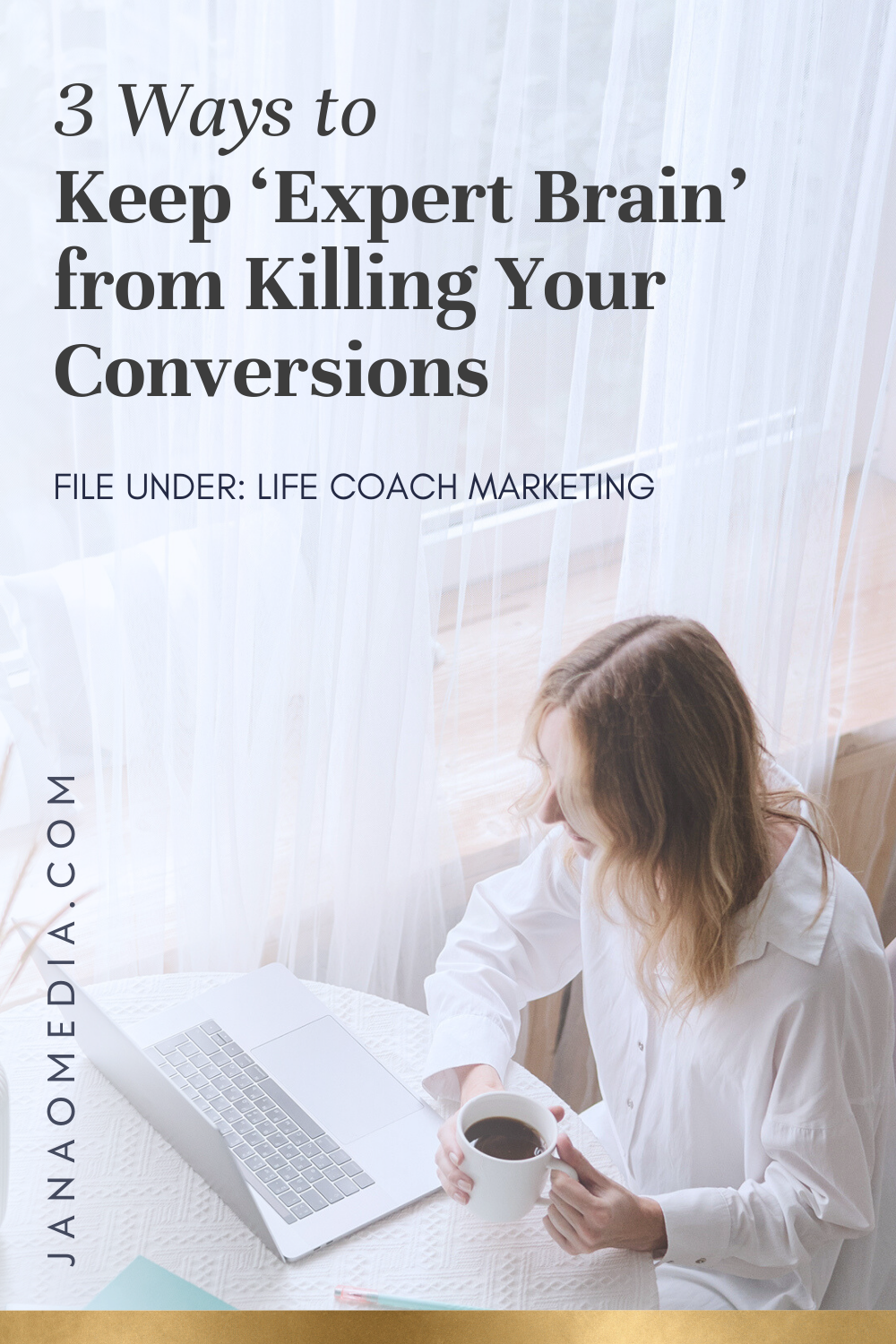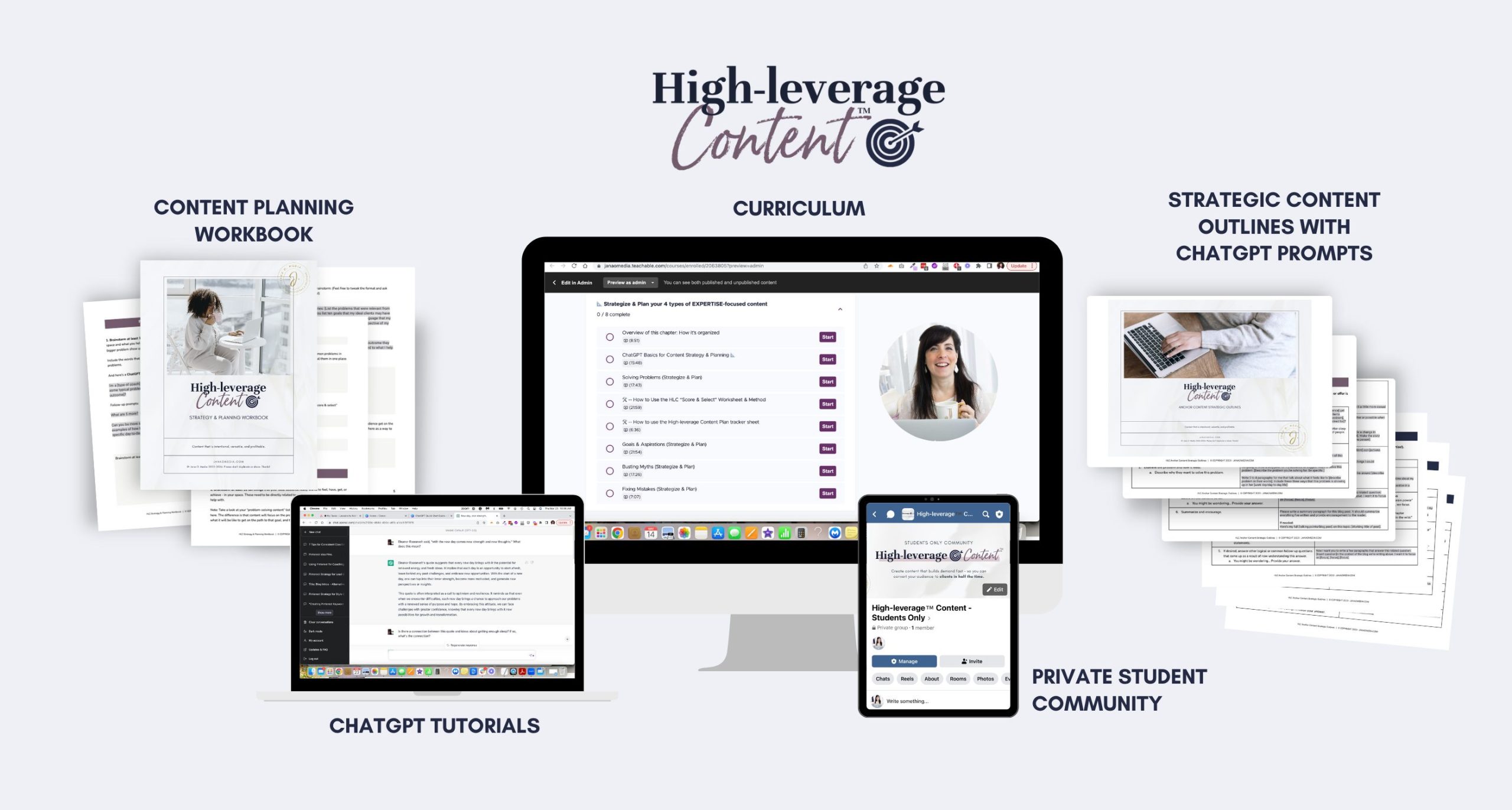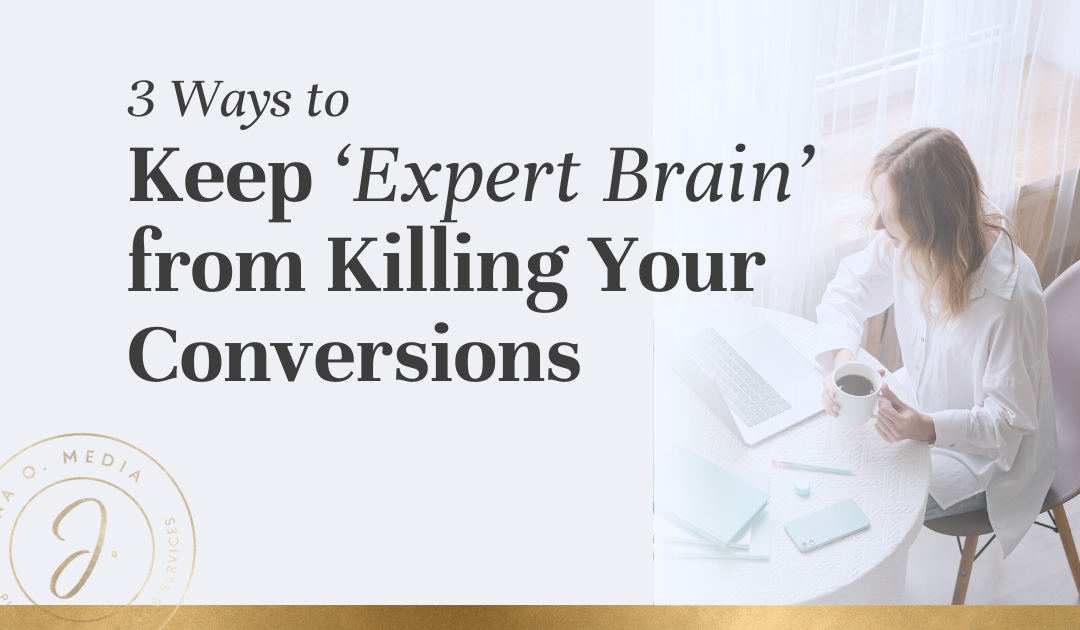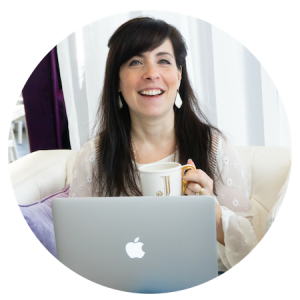Have you ever had someone suggest that you “simplify” or “dumb down” the language you’re using in your marketing? 🫣
Well, friends, I wish I could say that wasn’t necessary…
But it probably is — if you want what you’re writing to bring you clients. (And I know you do. That’s probably why you follow my blog!)
Chances are, you’re a health coach, life coach, or other online expert. And you probably have years of experience helping people, and a deep understanding of your particular areas of wellness or self-improvement.
But despite your expertise, you’re struggling to convert your audience into paying clients, in this iteration of your business.
Your content is rich with information, but it doesn’t seem to be hitting the mark — and your conversion rates are frustratingly low.
If you’re nodding your head right now, you might be suffering from what I call “Expert Brain.”
It’s the curse of knowing so much that you forget how to communicate in a way that truly resonates with those seeking your help.
In this post, I’ll show you three ways to keep your expertise from killing your conversions.
Let’s nip this in the bud — and instead turn your hard-won knowledge into a powerful tool for growing your coaching or service-based business.
Strategy 1: Use the words your audience uses.
One of the biggest mistakes health coaches make is speaking in technical jargon or lingo that their audience doesn’t understand or connect with.
While it’s second nature for you to talk about macronutrients, insulin resistance, or metabolic pathways, these phrases might leave your potential clients might be scratching their heads. (Or worse, they just don’t think about them at all, and just keep scrolling…)
So what do we need to do instead?
Listen to how your audience talks about their health challenges. Are they saying they feel “tired all the time,” “can’t lose weight no matter what,” or “just want to feel better”?
Use these phrases in your content to create a connection and show that you understand their struggles.
Here’s something you can do, starting today, to address this:
Maintain a dedicated notebook, just to record the words you hear your ideal clients using.
(If you prefer, you could always open up a new Google doc or the like, but who doesn’t love an excuse to buy a fresh new notebook? 😉)
Make a weekly recurring appointment with yourself, to spend 30 minutes listening and writing words, phrases, and sentences down. Each week you can head to a different “source” for this information, or you can use the same couple of sources on repeat. Here some examples of places to spend your 30 minutes weekly:
1. Observe in forums like Reddit, Quora.
2. Observe in Facebook groups where your audience is.
Example: If you’re a fitness coach for midlife women, you might hang out in a group about Thriving in Midlife. You can also search here for words / phrases like “workouts” or “fitness” or “more energy” to hone in on the right conversations to observe.
3. Listening to recorded sessions with your clients – and/or to sales calls you’ve recorded.
When it’s time to plan and create content, you’ll be able to tap into this growing resource you’re creating. This is basically guaranteed to increase your understanding of your people, and your conversions.
Quick tip: If there’s something you hear a lot, write it down AGAIN, each time. (Don’t think, “Oh, I already have that one.”) Doing this will allow you to see the patterns, over time, which is really valuable intel!
Okay, then onward to Strategy 2…
(Pssssst…. You can 📌 pin this article for reference to your
“Coaching Business” or “Marketing” boards:)

Strategy 2: Rank your content topic ideas based on relevance, before you write or record.
It’s easy to get excited about sharing everything you know, but not all of your knowledge is equally important to your audience.
To steer clear of the “Expert Brain” pitfall here, you’ll need to avoid covering topics that you’re passionate about, but that don’t actually resonate with their audience.
Inside my signature course and program, 🎯 High-leverage Content, I teach my students to use my “ARE” framework.
It’s a reliable way to assess your topics BEFORE you invest time and energy in writing about them. (The overall goal of ARE is to ensure that you spend more of your time on content that is likely to convert, and waste less time on topics that won’t.)
Applying the “ARE” method means that you score each of your topic ideas on three factors:
- Alignment with your paid offers
- Relevance to your audience
- Ease for you get detailed on the topic
To learn more about all three elements of “ARE,” you can read my blog post, Why Your Content Isn’t Converting Yet, where this framework is featured.
But for now, let’s just look at the second element, Relevance…
Imagine this…
You’re excited about a new research study on sugar’s effects on cognitive ability.
While this is undoubtedly interesting and aligns with your expertise, you need to ask yourself, “Is this topic highly relevant to my audience right now?” If your audience is primarily interested in practical tips for increasing energy and productivity, the relevance might be low.
(YES! Even though YOU know there’s a connection between sugar and productivity. << I hear you asking this question, right through this blog screen! 🤣)
In this example, if you followed the prompts in the High-leverage Content “ARE” framework, you might discover that a blog post called, “How Does Sugar Affect Cognitive Ability?: New Research You Need to Know”…
… might not be as relevant-seeming to your future clients as a blog entitled, “5 Crazy-Simple Ways to Reduce Sugar and Feel Energized & Focused All Day.”
So, Strategy 2, to ensure you’re not letting “Expert Brain” dictate your topic choices, is to rate your topic ideas on relevance (before you dive in and create content around them).
By doing this, you can objectively determine which topics will resonate most with your audience and drive engagement and conversions.
(Pssst… If you want to utilize my simple but powerful ARE framework for doing this, you’ll find it inside High-leverage Content! More on that below.)
Okay…
Keep reading for Strategy #3. (This one might just blow your mind!) 🤯
And meanwhile… Here’s a quick “Cheat Sheet” to summarize the three strategies:

Strategy 3: Recruit an unlikely ally: ChatGPT.
Sometimes we do this because the “201” stuff feels more exciting to us than the “101’s.” (And that can be solved with Strategy 2, above.)
But often, the reason is even simpler:
We just don’t THINK to cover the basics, because they’re no longer on our own radar screens. Things that have become second nature to you are often still unclear to your audience (because you’re several steps ahead of them).
So here’s you’re unlikely ally:
ChatGPT is actually so good for solving for this.
And the reason is sort of wild! 😲
Let me explain…
You know how sometimes people criticize ChatGPT for being a little *basic* and generic? (People complain it’s unoriginal.) Like… It spits out things that are just a synthesis of all the info that’s *already* out there on a topic?
Well… that can *WORK TO OUR ADVANTAGE* when we need to brainstorm high-converting content topics. 🤯
Yep… Because ChatGPT is so good at synthesizing large amounts of information, it often gives us BASIC things that humans on the internet talk about, want, or struggle with, that were almost *too obvious* … so we ALMOST overlooked them.
Example: Let’s say you coach around Digestion & Bloating. You brainstorm these problems that you know your audience faces:
- Having to plan social events around potential digestive issues.
- Hard to find the time to invest in finding / testing effective treatments or therapies.
- Hard to dine out while trying to avoid foods that exacerbate symptoms.
- Feelings of embarrassment or self-consciousness related to digestive symptoms in public settings.
These could be great. BUT YOU OVERLOOKED some obvious ones:
- Confusion around what foods cause symptoms.
- Discomfort and pain during flare-ups.
Ohhh. Ooops. Duh! 🤦🏻♀️
(It’s been awhile since we were in “beginner shoes,” so this is easy to do.)
If you invest time in your content creation before you’re reminded of these very basic but commonly-experienced and *highly-needed* topics, you’ll miss out on an opportunity to meet a lot of ideal future clients EXACTLY where they’re at.
So, inside High-leverage Content, I teach you exactly how to use ChatGPT to avoid this particular “Expert Brain” trap.
Using ChatGPT in the way I teach you to, during the topic brainstorming phase, will be a game-changer for you.
It will tell you what you missed, before you go and spend waayyyy too much time on topics that won’t bring you clients.
Because it (ChatGPT) is really good at “basic” — right when you need it to be!
Inside High-leverage Content, it’s totally *optional* to incorporate the use of ChatGPT… But my students who do give it a try (with my methods) end up loving it. They say they can’t believe they were trying to come up with content ideas without it before!
(HLC really has an entire micro-course inside, all about how to use ChatGPT!)
The way we use ChatGPT inside High-leverage Content to brainstorm and plan, it will help quickly get you out of the “expert brain trap” — and right into the minds and hearts of your audience.
And I just can’t overstate how much doing this will make your content so much more SCROLL-STOPPING and HIGH-CONVERTING.
How to Dodge “Expert Brain” & Create High-Converting Content
In my signature program, High-leverage Content, I show you how to create a library of long-form content that gets you clients today, and is easy to repurpose and leverage on repeat.
We focus on creating content that includes the 9 key things that your future client needs to hear, learn, and understand – before she’ll feel confident to hire you.
In Part 1 of the HLC course, the “Strategy & Planning” phase, I show you my prompts, methods, and process for *brainstorming* at least 90 content topics, using ChatGPT.
And, I teach you my “ARE” method. I’ll show you how to use it to discern and decide *exactly* what topics will convert. This way, you can create content that truly addresses their future clients’ needs and challenges, and gets them booking and buying with you.
And in Part 2 of HLC, we use my proprietary “HLC Strategic Content Outlines” and a proven, step-by-step process to create content that hits all the right marks — and helps you grow your client roster.
Learning how to use ChatGPT *MY* way 💅🏼 is a life-long skill that will serve you and your business for months and years to come.
You’ll finally have people doing double-takes and thinking, “I need that” whenever they see your headlines… And you’ll be able to grow your audience like never before.
And knowing how to use the ARE framework will literally transform your content.
You’ll go from struggling to convert clients with it, to a waitlist of dreamy future clients who are just waiting for an opening on your roster.
Join us inside High-leverage Content to learn these tools!




This is one of my favorite blog posts from you. Sooo helpful and actionable. And the really specific examples are super helpful. My brain wheels are turning already!
Angelica! Thank you for that feedback. So great to hear that it’s though-provoking and helpful. 🙂
Fortunately, my background in the medical field has equipped me with the ability to simplify complex terms so that they are easily understood by laypeople. This skill has greatly facilitated my transition into a career in content writing and social media.
@lem – Yessss! That is SUCH valuable skill, and good for you for mastering it.